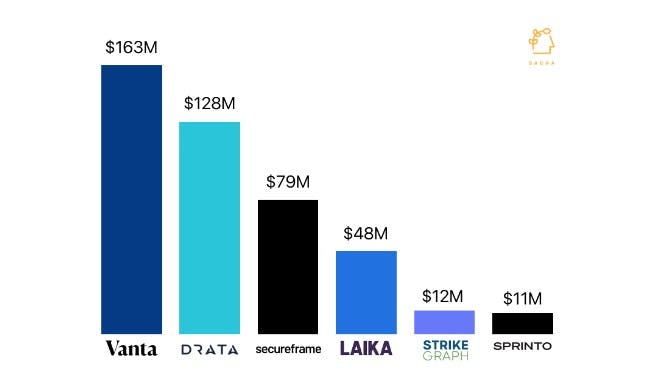Vercel, Netlify, and the consumerization of developer tools
 Jan-Erik Asplund
Jan-Erik Asplund
TL;DR: We did interviews with Kleiner Perkins’ Bucky Moore, Netlify’s VP of Developer Experience Jason Lengstorf and PayPal’s Jamund Ferguson to learn more about what cloud PaaSes like Vercel and Netlify have the potential to become.

Netlify ($2B) and Vercel ($2.5B) have collectively raised more than $500M to win over developers with the best experience for writing and deploying web apps on “Jamstack” (Netlify’s term).
Check out our weekly email for more insights like this into private companies.
Success!
Something went wrong...
We set out to better understand why this is happening now, how companies like Vercel and Netlify will be able to both create and capture value, and what the upside case for these kinds of platforms looks like.
Key points from our interviews:
- Netlify/Vercel do for the "Jamstack" what Heroku did for Ruby on Rails—create a consumery, push-button deploy for web apps not unlike Uber’s “push a button and a car arrives”. Heroku pioneered the “surprise and delight” experience of typing in “git push heroku master” and having a website go live. Vercel/Netlify do the same with opinionated defaults designed to optimize for developer experience. [link]
- Jamstack sites are written in Javascript, call on APIs for back-end functionality, and deliver content via prebuilt markup served over CDNs for better performance at scale. By decoupling front- and back-end, developers can deploy much faster and front-end developers are empowered to create complex web apps without having to learn the back-end at all. [link]
- The Apple II wrapped an OS with color graphics around a box full of commodity hardware. Vercel/Netlify’s business model is based on wrapping a developer-friendly workflow around a bundle of cloud services. By going through Netlify/Vercel, you get pre-configured file storage, CDN, compute, routing and serverless functions without having to set each one up yourself or think about clusters or provisioning. [link]
- Compared with site builders like Wix and Squarespace that also index on launching fast, Vercel/Netlify allow developers access to an entire universe of 3rd party APIs—making it easier for them to customize key elements and differentiate based on product. By making it easy to hook up to 3rd party APIs, Vercel/Netlify also enable the interoperability of those APIs and help them drive distribution through their integration marketplaces. [link]
- Vercel/Netlify cost 6x~ as much as AWS Cloudfront for each additional 100GB after 1TB in bandwidth, creating a natural breakpoint where enterprises would roll their own version to save money. While the pricing scale works for startups and smaller companies, the resale model creates breakpoints where larger enterprises are liable to leave to lower their overall cloud spend. [link]
- The extent of enterprise adoption of Vercel/Netlify takes place on small teams building one-off projects or prototypes. Rather than fully rewrite their codebase for the Jamstack, big companies like Amazon and PayPal are using Jamstack frameworks when they want to launch new consumer-facing services quickly and cheaply without expending significant dev resources. [link]
- “Jamstack” as a term has become less relevant today. What’s relevant now is whatever improves the developer experience, opening the door for new cloud PaaSes designed around different defaults. One big core source of competition for Vercel/Netlify is products like Render and Railway and frameworks like Blitz.js, which provide easy ways to write and deploy apps outside the norms of the Jamstack. [link]
- All-in-one collaborative IDEs and deployment platforms like Replit have built an even more consumer experience for Gen Z developers at the bottom-end of the market. Even more so than Vercel/Netlify, Replit is consumer-grade—finding product-market fit with high school coders and Gen Z and threatening to become the on-ramp to front-end development that Vercel/Netlify want to be. [link]
- The upside case for Vercel/Netlify is that they use their ability to build for the consumer to get closer to developers and ultimately render the underlying infrastructure a commodity. Where Vercel/Netlify win is on their ability to build end-user-focused products that give front-end developers superpowers—AWS and Azure have historically struggled to get out of the infra layer and build truly consumer-grade experiences. [link]
For more, check out all of our Jamstack interviews here:
- Bucky Moore, Partner at Kleiner Perkins, on the next big cloud PaaS
- Jason Lengstorf, VP of Developer Experience at Netlify, on Netlify's business model
- Jamund Ferguson, senior engineer at PayPal, on Jamstack adoption in the enterprise
- Thom Krupa, co-founder of Bejamas, on building dynamic apps on the Jamstack
- Cole Krumbholz, founder at Formspree, on the future of full-stack development
- Lenny Bogdonoff, co-founder and CTO of Milk Video, on the past, present and future of Javascript
- Jamstack agency founder on the rise of Next.js and Vercel
- Bud Parr, founder of the New Dynamic, on Jamstack's Cambrian explosion








